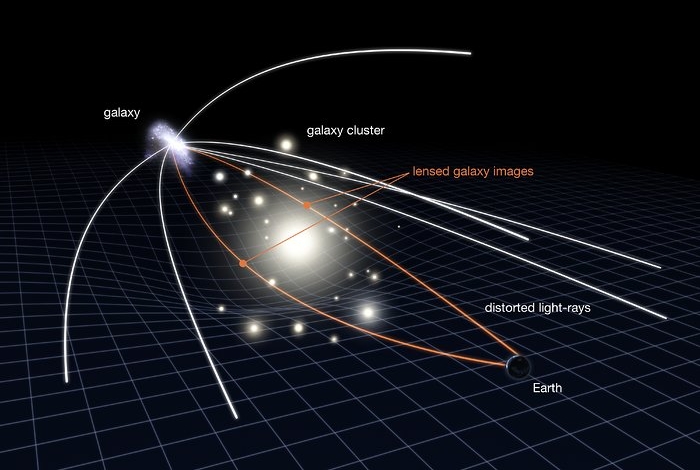The smears of light called the Molten Ring, stretched out and warped by gravitational fields, are magnifications and duplications of a galaxy whose light has traveled a whopping 9.4 billion light-years. This magnification has given us a rare insight into the stellar 'baby boom' when the Universe was still in its infancy.
The early evolution of the Universe is a difficult time to understand. It blinked into existence as we understand it roughly 13.8 billion years ago, with the first light emerging (we think) around 1 billion years later. Light traveling for that amount of time is faint, the sources of it small, and dust obscures much of it.
Even the most intrinsically luminous objects are extraordinarily hard to see across that gulf of space-time, so there are large gaps in our understanding of how the Universe assembled itself from primordial soup.
But sometimes the Universe itself offers us a helping hand. If a massive object sits between us and a more distant object, a magnification effect occurs due to the gravitational curvature of space-time around the closer object.
 Illustration of gravitational lensing. (NASA, ESA & L. Calçada)
Illustration of gravitational lensing. (NASA, ESA & L. Calçada)Any light that then travels through this space-time follows this curvature and enters our telescopes smeared and distorted – but also magnified and duplicated. These are called Einstein rings, because the effect was predicted by, you guessed it, Albert Einstein.
The phenomenon itself is called gravitational lensing, and while it has given us some absolutely amazing images, it also affords us brilliant opportunities to combine our own magnification capabilities – telescopes – with those of the Universe to see things that might otherwise be too far to make out clearly, or at all. READ MORE...

No comments:
Post a Comment